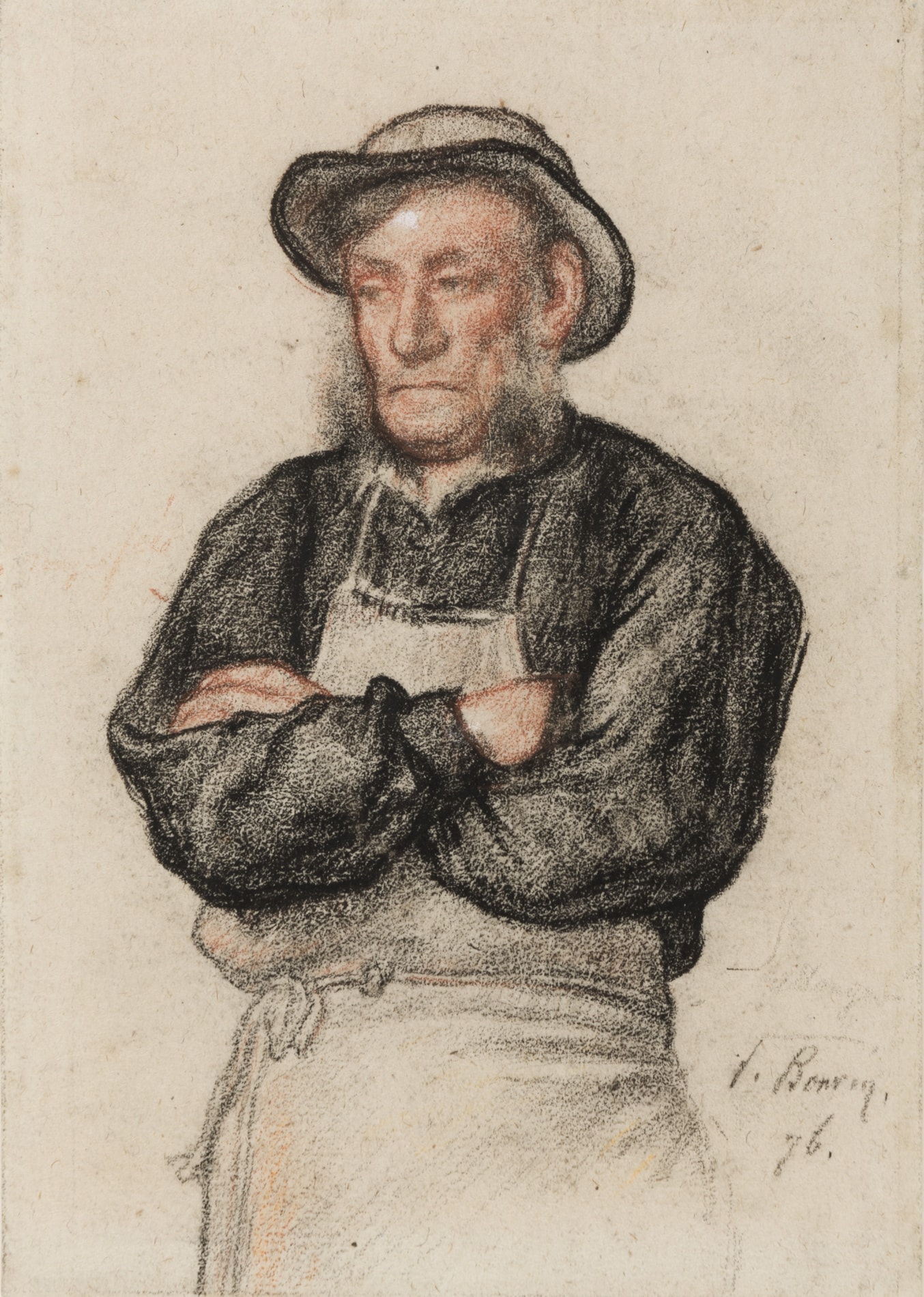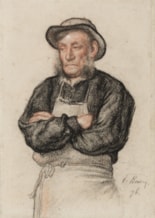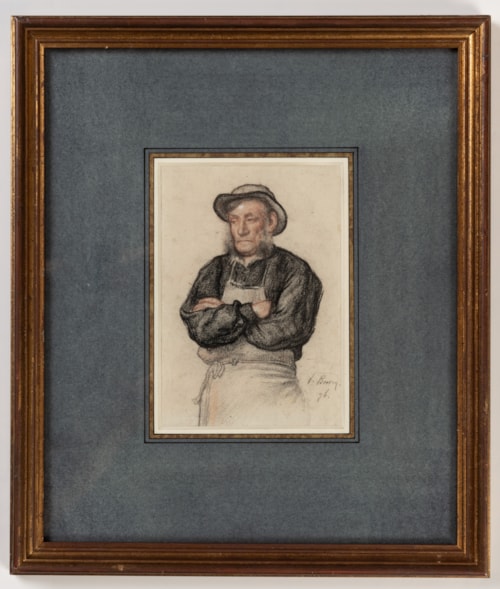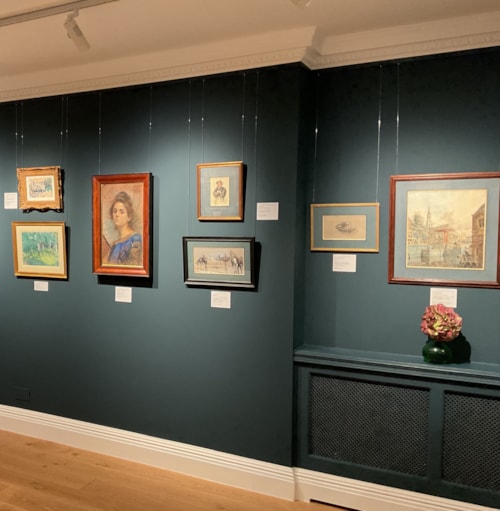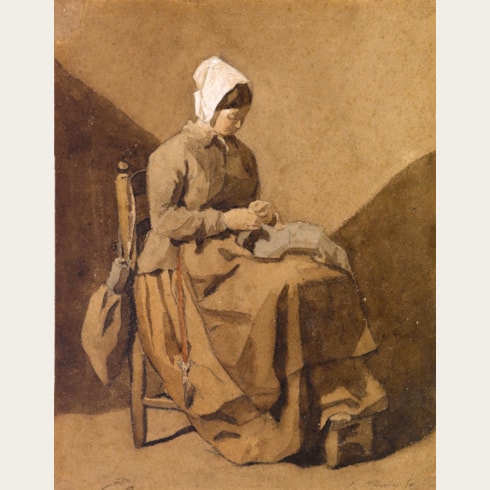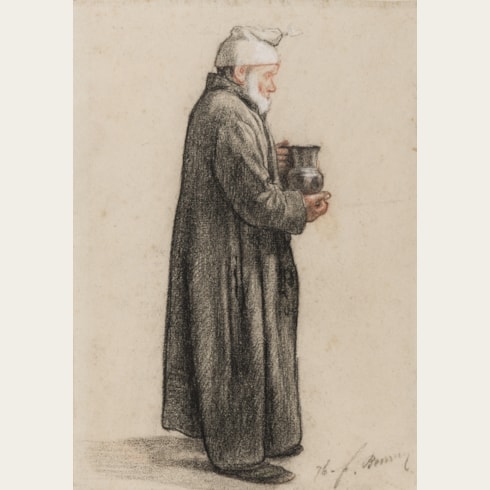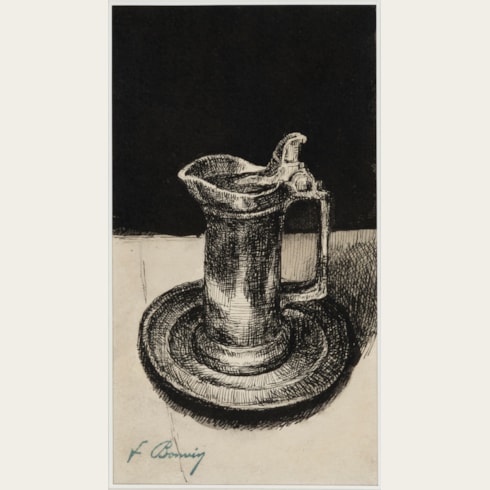François BONVIN
(Vaugirard 1817 - Saint-Germain-en-Laye 1887)
A Standing Man with his Arms Folded
Black and red chalk, with touches of white chalk.
Signed and dated f. Bonvin. / 76. at the lower right.
Faintly and illegibly inscribed in pencil at the lower right.
165 x 118 mm. (6 1/2 x 4 5/8 in.)
Signed and dated f. Bonvin. / 76. at the lower right.
Faintly and illegibly inscribed in pencil at the lower right.
165 x 118 mm. (6 1/2 x 4 5/8 in.)
Dated 1876, this is a fine and typical example of the sort of finished drawing that François Bonvin is likely to have intended for sale. The drawing was once part of the stock of the Parisian form of Galerie F. & J. Tempelaere, established by the brothers Ferdinand and Julien Tempelaere in 1904 after the death of their father, the dealer Gustave Tempelaere. The elder Tempelaere seems to have begun taking an interest in Bonvin’s work around 1874 or 1875, and eventually signed a contract with the artist and helped to support him financially.
Born into poverty, François Bonvin studied at the Ecole de Dessin in Paris between 1828 and 1830, but had to abandon his studies to begin work as a typesetter and printer. His earliest known works date from the late 1830’s, by which time Bonvin was also working as a police clerk. He eventually returned to his studies at the Ecole de Dessin – a school geared primarily towards the decorative arts - and in 1843 began attending life-drawing classes at the Académie Suisse. Around this time he met his mentor, the painter François-Marius Granet, who encouraged him to study 17th century Dutch and Flemish painting as a way of refining his approach to genre subjects. Perhaps with the support of Granet, who was on the jury, Bonvin made his Salon debut in 1847, and he continued to show there until 1880, earning a particular reputation as a painter of genre and interior scenes and still-lifes.
Bonvin rose to become one of the leaders of a group of Realist painters in 19th century France who found inspiration in subjects and scenes taken from contemporary urban life. Many of the models for his drawings and paintings seem to have been habitués of the inn owned by his father in Vaugirard. In 1859 a number of his paintings were accepted for exhibition at the Salon, though Realist works by such friends and colleagues as Henri Fantin-Latour, Alphonse Legros, Théodule Ribot and James McNeill Whistler were rejected. As a result, Bonvin invited these artists to exhibit their rejected works at his studio, known as the Atelier Flamand, an offer repeated after the Salon of 1863. Later that year his wife left him, and Bonvin found it difficult to concentrate on his paintings, preferring instead to make numerous drawings. In his final years he grew blind and suffered from paralysis. Although a retrospective exhibition of his work was held in 1886, followed a few months later by a benefit auction intended to raise funds for a pension for the artist, Bonvin died in impoverished circumstances in 1887.
Bonvin’s modern reputation rests largely on his drawings. His first dated works were executed in 1845 and 1846, while he still worked as a civil servant. At this time he would exhibit his drawings informally under the arcades of the Institut de France, and it was there that he met his first significant patron, Louis Laperlier. At the start of his artistic career Bonvin would not be able to afford models, and would often make use of friends and their families as models, as well as washerwomen, cooks, nuns, children, peasants and beggars.
Provenance
Probably Gustave Tempelaere, Paris
Galerie F. & J. Tempelaere, Paris
Paul Brandt, Amsterdam, in 1977.
Galerie F. & J. Tempelaere, Paris
Paul Brandt, Amsterdam, in 1977.
Exhibition
Laren, Singer Museum, 19e en 20e eeuwse Franse kunst: aquarellen en tekeningen uit de collectie Paul Brandt, Amsterdam, 1977, no.6.

